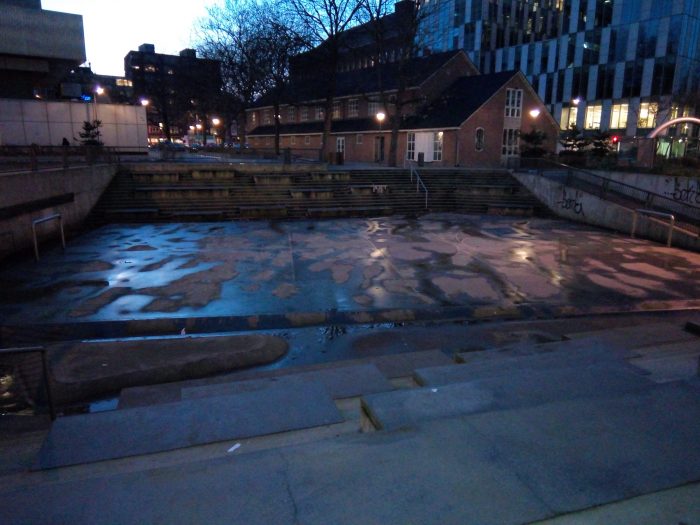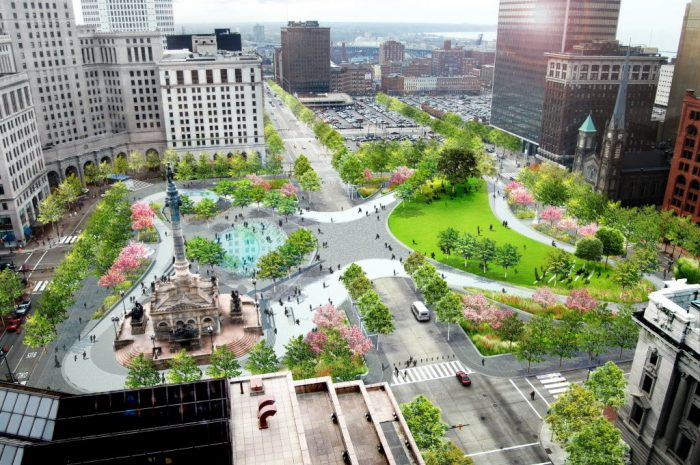Representatives from various Mexican institutions traveled to the Netherlands and Germany to reflect and share their experiences on climate adaptation actions related to water sustainability that were established as part of the Nationally Determined Contribution (NDC) of the Paris Agreement. The trip raised awareness about the water projects being carried out in the two countries and generated ideas on how to apply the Water Smart Cities system to Mexico.
With the inauguration of La Quebradora water park, Mexico City will be able to call itself a Water Smart City (WSC), joining cities such as Rotterdam, Beijing, Berlin and Melbourne that have carried out interventions in the public space using an integrated approach to urban water management, confronting the water challenges facing the majority of global cities head-on. Due to increased urbanization and climate change, there is great pressure to provide water to cities, as well increasing demand on hydraulic infrastructure and growing vulnerability to floods.
This situation forces cities to create urban resilience strategies that, in addition to helping cities manage flood risk more efficiently, provide them with new urban infrastructure, landscape improvements and new urban designs and dynamics.
Las medidas implementadas tienen por objetivo cerrar el ciclo urbano del agua, que se compone de las siguientes etapas:

The implementation measures aim to close the urban water cycle linked to another cycle, one that seeks to introduce measures based on nature and restore the natural capacity of cities to drain rainwater They are referred to as Water Smart City Solutions.

Like the Watersquare Benthemplein in Rotterdam, Netherlands, La Quebradora water park will reduce vulnerability to flooding in a highly densified area.

The Water Square Benthemplein, a project carried out by De Urbanisten under the Rotterdam Climate Initiative, is an urban intervention that reduces the vulnerability of the Agniese neighborhood to flooding. The project transformed an empty, dull and densely populated neighborhood into a 9,500 m² recreational space. The public space includes three large basins that, when dry, can be used as an amphitheater and for activities like skating, basketball and volleyball. But when it rains, these same basins double as retention ponds with the capacity to temporarily store 1,800 m³ of rainwater. This system helps reduce runoff, decrease pressure on the drainage system and prevent flooding.

La Quebradora water park incorporates a Water Sensitive Urban Design (WSUD) that reduces the risk of flooding caused by runoff from the Santa Catarina mountains through a water management system that collects rainwater and allows for infiltration to the aquifer. Through WSUD, in both projects it becomes possible to reintroduce the runoff into the urban landscape, avoid rainwater pollution, increase biodiversity, create more favorable microclimates that decrease solar radiation, thus preventing heat from being stored inside buildings and causing the heat island effect common to highly urbanized areas. In addition, the three pillars of WSUD are achieved: water capture in cities, the generation of ecosystem services and community participation.
The study trip took place from November 27 to December 8, 2017 and was organized by the Mexican-German Climate Change Alliance of the Deutsche Gesellschaft für Internationale Zusammenarbeit (GIZ) GmbH. Participants included representatives from the Climate Change Directorate-General of the Ministry of the Environment and Natural Resources (SEMARNAT), the National Water Commission (CONAGUA), the National Institute of Ecology and Climate Change (INECC), the Mexican Institute of Water Technology (IMTA), the Ministry of Urban Development and the Environment (SEDUMA) of the Government of Yucatan State, and the Groundwater Technical Committee of the Basin Council of the Yucatan Peninsula.
Reference
https://land8.com/waterplein-benthemplein-reveals-the-secret-of-versatile-water-squares/
https://www.publicspace.org/es/obras/-/project/h034-water-square-in-benthemplein
http://inmobiliare.com/parque-hidrico-la-quebradora/
http://www.milenio.com/estados/la-quebradora-parque-hidrico-de-nivel-mundial
http://www.agua.unam.mx/vi-encuentro/assets/pdf/ponencias/castro_loreta.pdf
http://cicm.org.mx/wp-content/files_mf/estrategiaderesiliencia.pdf
Raquel Vargas is an urban planner, specialized in adapting water resources to climate change. Degree in Political Science and Public Administration from the National Autonomous University of Mexico, and Master in Urban Planning from the Postgraduate Course in Urban Planning at UNAM.
This article is by Raquel Vargas of the National Water Commission. The content of this article is the exclusive responsibility of the author.
